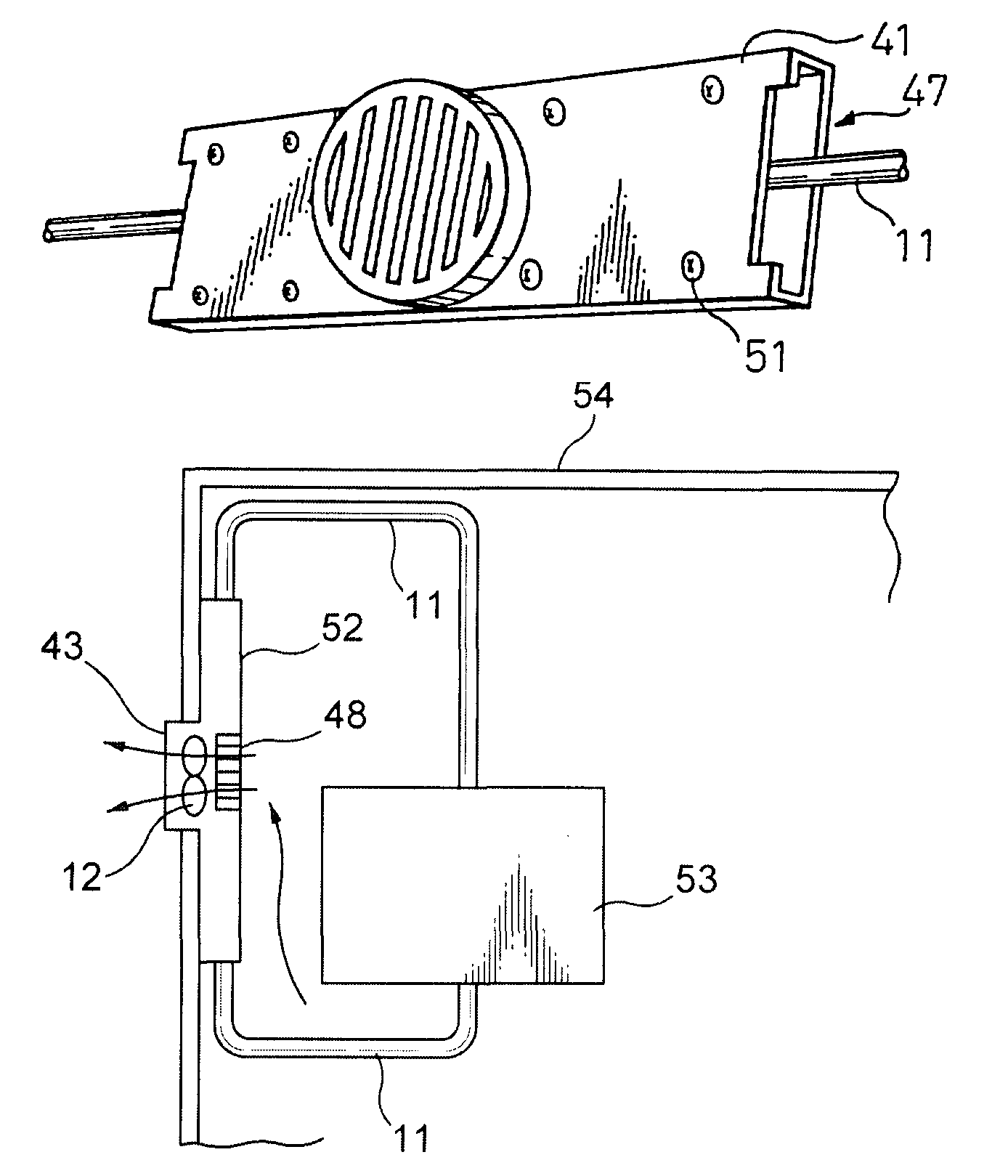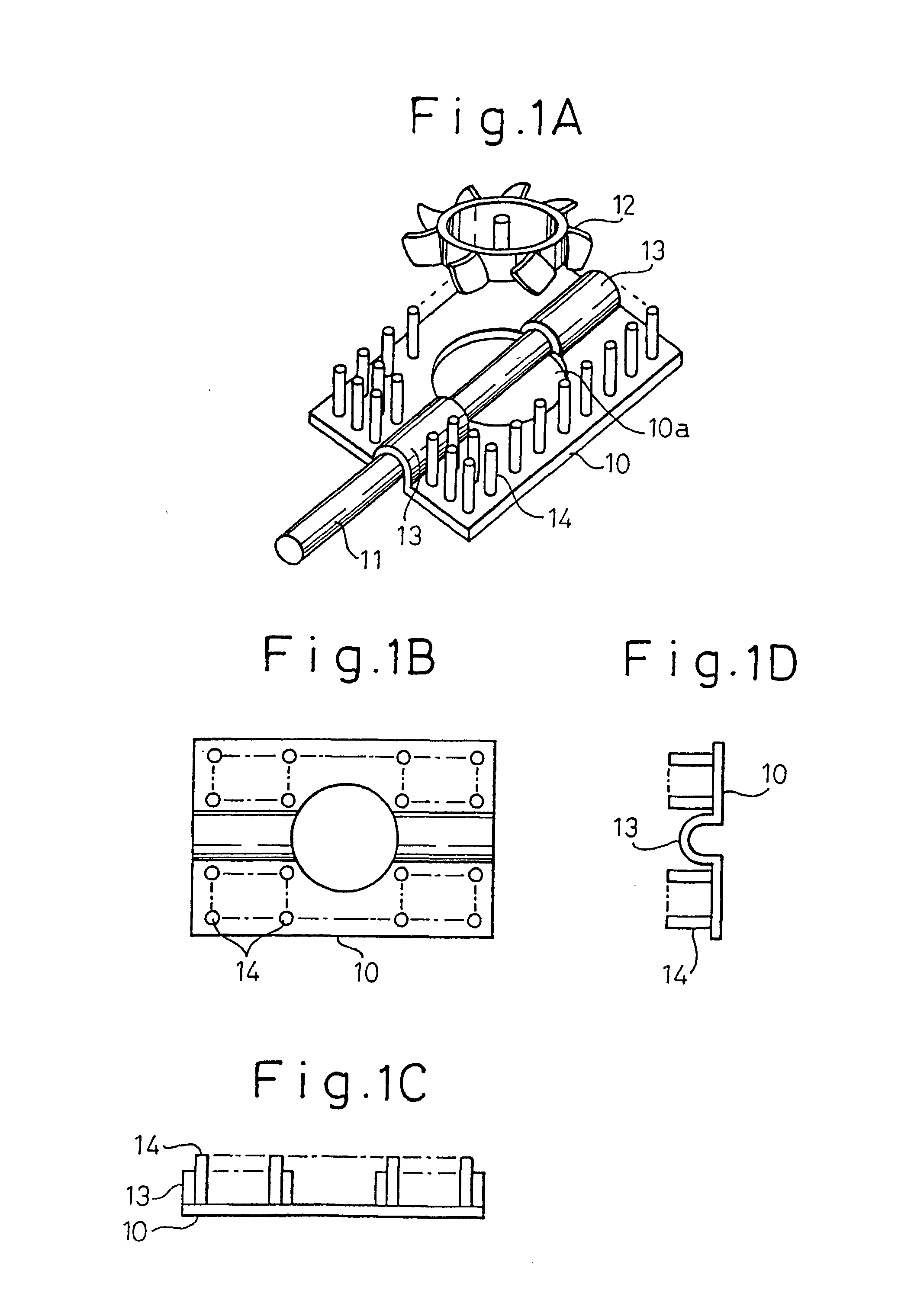Heat sink and information processor using heat sink
a technology of information processor and heat sink, which is applied in the field of heat sink, can solve the problems of difficult to ensure the space in which the cooling fan is embedded, the inability to ensure the space in which the cooling fan is placed, and the height of the heat sink, so as to enhance the degree of freedom to determine the mounting position of the cooling fan, improve the cooling efficiency, and increase the air quantity
- Summary
- Abstract
- Description
- Claims
- Application Information
AI Technical Summary
Benefits of technology
Problems solved by technology
Method used
Image
Examples
first embodiment
[0105]FIGS. 1A˜1D are views showing the present invention. FIG. 1A is a perspective view, FIG. 1B is an upper view, FIG. 1C is a front view, and FIG. 1D is a side view. In these figures, reference numeral 10 is a heat sink body, reference numeral 11 is a heat pipe corresponding to the heat transmitting member described in the scope of claim of the patent, and reference numeral 12 is a cooling fan. The heat sink body is formed into a rectangular plate shape. There is provided a cooling fan 12 above the heat sink body 10. The cooling fan 12 is embedded in a space 10a under the condition that a shaft of the cooling fan 12 is supported by a cover mounted on the heat sink body 10. There is provided a tunnel-shaped heat pipe accommodating section 13 into which a heat pipe 11 is inserted while the heat pipe 11 crosses two sides of the heat sink body 10 which are opposed to each other. This heat pipe accommodating section 13 corresponds to the holding section described in the scope of claim...
third embodiment
[0116]In the third embodiment, the printed board is also used as a cover to support the cooling fan 12. Therefore, it is possible to ignore a space in the cooling fan in which the printed board is conventionally arranged. Consequently, it is possible to reduce the thickness of the heat sink including the cooling fan.
[0117]When only the cooling fan 12 is supported on the printed board 18, which is also used as a cover, an empty space is generated. In order to utilize the empty space, a portion of the drive circuit, which is conventionally mounted in the fan motor, can be arranged on the upper surface of the printed board. When the fan motor drive circuit is arranged being separated into the fan motor and onto the printed board, the thickness of the cooling fan can be reduced. In this connection, this printed board is also used as an upper lid of the box 15 in which the heat sink body is accommodated.
[0118]FIG. 4 is a perspective view showing the fourth embodiment of the present inven...
seventh embodiment
[0122]FIG. 7 is a perspective view showing the present invention. In this embodiment, the box-shaped cover 31 is attached onto the printed board 18 in such a manner that the box-shaped cover 31 is laid upside down on the printed board 18. There is formed a long hole 34 on at least one side which is different from the side of the box 15 on which the slits 17 are formed. When the surface on which the slits 17 are formed and the surface on which the long hole 34 is formed are shifted from each other, it is possible to shift the suction side and the discharge side. Therefore, the cooling air can be prevented from going round.
PUM
 Login to View More
Login to View More Abstract
Description
Claims
Application Information
 Login to View More
Login to View More - R&D
- Intellectual Property
- Life Sciences
- Materials
- Tech Scout
- Unparalleled Data Quality
- Higher Quality Content
- 60% Fewer Hallucinations
Browse by: Latest US Patents, China's latest patents, Technical Efficacy Thesaurus, Application Domain, Technology Topic, Popular Technical Reports.
© 2025 PatSnap. All rights reserved.Legal|Privacy policy|Modern Slavery Act Transparency Statement|Sitemap|About US| Contact US: help@patsnap.com



